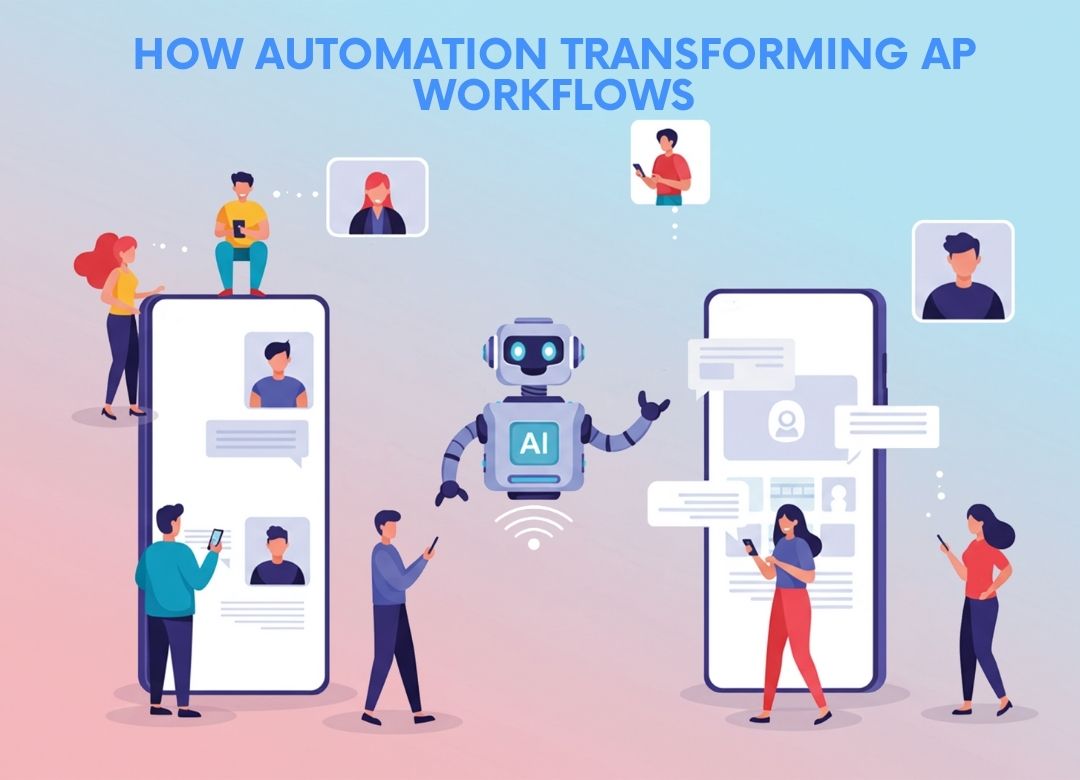Introduction
Accounts Payable (AP) has long been seen as a back-office function that quietly keeps business moving. But today, technology—specifically artificial intelligence—is giving AP a new identity. No longer bogged down by manual data entry and invoice chasing, AP teams are becoming strategic partners in finance. How? Through automation that uses machine learning, natural language processing, and predictive analytics to handle tasks faster, with fewer errors, and at lower costs.
This article explores how AI is reshaping AP workflows—from data capture and fraud detection to predictive insights—and what small and midsize businesses should know before investing in these tools.
The State of AP in 2025
According to Ardent Partners, best-in-class AP teams are already seeing impressive results:
- 79% lower processing costs compared to their peers.
- 79% faster cycle times.
- Automated invoices processed in just 2.9 days, versus an average of 8.2 days.
Yet, only 44% of AP teams are using AI today, even though more than 75% expect adoption within 12 months. The message is clear: while automation is delivering measurable benefits, there’s still room for wider adoption.
How AI Improves AP Workflows
1. Smarter Data Capture
One of the most time-consuming aspects of AP has always been entering data into ERP systems. AI-driven Optical Character Recognition (OCR) and machine learning now take that burden away. In fact, Tungsten Automation reports that 55% of AP departments use AI-enabled OCR/ML for data extraction. This not only speeds up invoice entry but also dramatically cuts down on typos and mismatches.
2. Fraud Detection and Risk Management
Fraudulent invoices and duplicate payments cost businesses billions every year. AI systems flag anomalies—whether it’s an invoice submitted twice, a vendor suddenly changing bank details, or a suspicious spike in invoice amounts. With predictive algorithms, AP teams can catch these red flags before payments go out, safeguarding company cash.
3. Predictive Insights for Better Planning
Beyond handling routine tasks, AI also provides foresight. Predictive models can forecast cash flow, identify payment bottlenecks, and even suggest optimal payment terms with vendors. This kind of intelligence gives CFOs and finance teams data-backed recommendations for better decision-making.
Tangible Benefits for Businesses
Faster Approvals
Delayed approvals frustrate vendors and damage relationships. AI eliminates bottlenecks by routing invoices to the right people automatically and reminding them when action is needed. According to Concur, manual ERP data entry has dropped to 60%, down from 85% in 2023, showing that more teams are spending less time chasing approvals and more time focusing on strategic work.
Cost Savings
Processing an invoice manually costs an average of $9.40, while best-in-class automation brings that down to $2.78 per invoice (Tungsten Automation). At scale, that’s significant—especially for small to midsize businesses.
Error Reduction
Mistakes aren’t just frustrating—they’re expensive. AI reduces human error by as much as 40% (Tipalti). Even better, automation helps bring invoice error rates down from 2% to 0.8% (Stampli). That’s money saved and stress avoided.
Examples from Small and Midsize Businesses
AI adoption isn’t just for Fortune 500 giants. Smaller companies are seeing results too:
- A regional construction firm implemented AI-enabled invoice processing and reduced average approval time from 10 days to under 3 days.
- A family-owned retail chain saw error-related vendor disputes drop by 35% after adopting AI-driven AP tools.
- A SaaS startup used predictive insights to renegotiate vendor terms, improving monthly cash flow by nearly 15%.
These stories illustrate that AI adoption isn’t just about efficiency—it’s about freeing up working capital and building stronger supplier relationships.
Adoption Challenges
While the upside is compelling, companies still face hurdles when bringing AI into their AP workflows.
Integration with Existing Systems
Many small and midsize firms worry about how AI solutions will connect with their ERP or Accounting service. Compatibility is often a sticking point.
Change Management
New tech requires people to change how they work. Training staff and overcoming resistance can slow implementation.
Cost Concerns
Some businesses hesitate because of upfront costs. However, when measured against long-term savings, the investment often pays for itself quickly.
Compliance and Security
Handling sensitive financial data raises compliance and cybersecurity concerns. Businesses need providers with strong data protections to avoid risk—especially during a business audit.
Practical Tips for Selecting AI-Friendly AP Solutions
Choosing the right solution can make or break your automation journey. Here are some practical tips:
- Look for native integrations. Tools that work with your ERP or accounting system save headaches later.
- Prioritize usability. If your AP team finds the software confusing, adoption will lag.
- Evaluate vendor support. Strong onboarding and customer service make transitions smoother.
- Start with core features. Data capture and invoice routing are quick wins.
- Think scalability. Your needs will grow; pick a platform that can grow with you.
For small to midsize businesses, reviewing the best accounting software solutions is a good starting point when evaluating AI-driven platforms.
Conclusion
AI isn’t just automating tasks—it’s reshaping how AP contributes to business strategy. From smarter data capture to predictive analytics, AI-powered AP tools are reducing costs, accelerating approvals, and cutting down on errors. While challenges like integration and change management exist, the benefits far outweigh the hurdles for businesses that take the leap.
For small and midsize companies, the future of AP isn’t just about paying bills faster—it’s about using technology to make better decisions, strengthen vendor relationships, and improve financial health. Those who act now will be better positioned to thrive in the years ahead.

Sandeep Kumar is the Founder & CEO of Aitude, a leading AI tools, research, and tutorial platform dedicated to empowering learners, researchers, and innovators. Under his leadership, Aitude has become a go-to resource for those seeking the latest in artificial intelligence, machine learning, computer vision, and development strategies.


